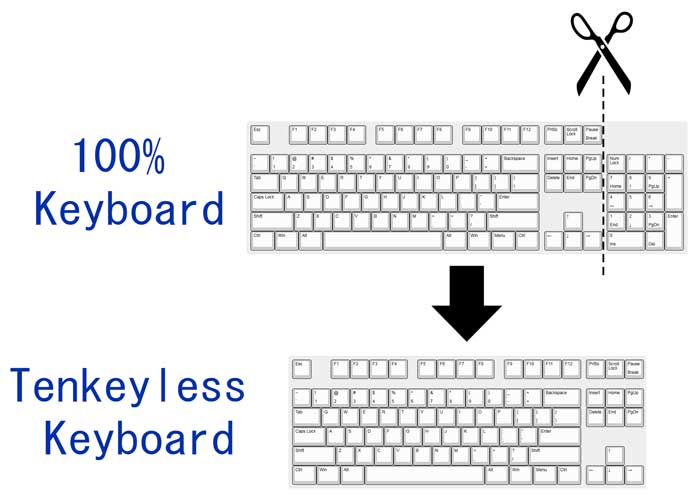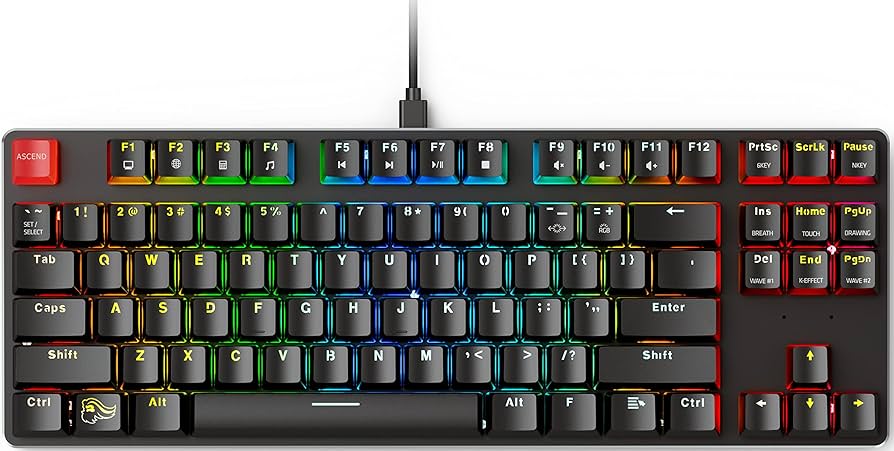Alright, so someone asked me the other day, or maybe I was just staring at my desk setup, thinking, “how many keys are actually on a tenkeyless keyboard?” It sounds simple, right? “Tenkeyless” – you just remove ten keys. Well, let me tell ya, I went down a bit of a mini-adventure figuring this one out properly, not just guessing.
My old keyboard, a full-sized beast, was hogging all my mouse space. You know how it is, especially if you’re into gaming or just like a cleaner desk. So I started looking into “TKL” or “tenkeyless” options. My first thought was, “Okay, tenkeyless, so it’s a standard keyboard minus ten keys from the number pad.” Seemed logical.

So, what I did first was actually look at a full-size keyboard. I counted the numpad keys. Let’s see… 1, 2, 3… up to 9, then 0, the dot, Enter, plus, minus, multiply, divide, and Num Lock. That’s way more than ten! Usually, it’s about 17 keys on a standard numpad. So, “tenkeyless” isn’t a literal subtraction of exactly ten keys. That was my first little discovery. The name’s a bit misleading, isn’t it?
My Process of Getting to the Bottom of It
So, I grabbed a couple of keyboards I had access to. One was my own, an older TKL I’d bought a while back, and another belonged to a friend who swore by his. I figured, “Let’s just count ’em. No substitute for actually doing the thing.”
The first one I picked up was what you’d call a standard US layout – that’s an ANSI layout, I learned. I sat there and pointed at each key, one by one. Top row, function row, number row, QWERTY row, home row, bottom row, and then the block with Insert, Home, Page Up, Delete, End, Page Down, and the arrow keys. After carefully tallying them all up, I landed on 87 keys. “Okay,” I thought, “87 it is. That’s the magic number.”
But then, just to be thorough, I moved on to my friend’s TKL. It looked mostly the same, but the Enter key was different, taller and L-shaped, and there was an extra key next to the left Shift key. So, I repeated the counting process. One, two, three… and this time, I ended up with 88 keys. Hold on a minute! Now I was a bit confused. Why the difference?
That’s when I realized “tenkeyless” is more of a general category, a form factor, rather than a super strict key count. It basically means you’ve chopped off that right-hand number pad section. The most common type, especially here in the US, is that 87-key ANSI layout. But the 88-key version, that’s typically an ISO layout, which you see more in Europe. That different Enter key and the extra key beside the left Shift account for the one-key difference.
So, what did I learn from this little exercise?

- I learned that “tenkeyless” doesn’t mean literally removing just ten keys.
- I confirmed by physically counting that 87 keys is super common for ANSI TKLs.
- I discovered that ISO TKLs often have 88 keys due to layout differences.
- I understood it’s more about the missing numpad section than a precise number.
It’s funny, you start with a simple question, and it opens up these little details. It’s not like building a rocket, but it’s good to know what you’re actually dealing with, especially if you’re particular about your gear. I even saw some really compact TKLs that might play around with the function row or the navigation cluster, shaving off another key or two, but for your typical, everyday tenkeyless, you’re looking at 87 or 88 keys. Most of the time, it’s 87 if you’re buying in the States. So, there you have it. My little investigation, all done and dusted. Now, if only decluttering the rest of my desk was that straightforward!